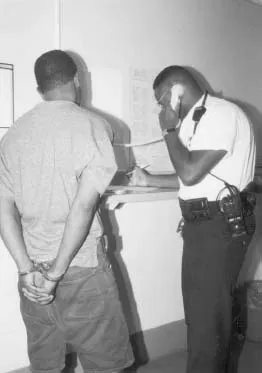
- 404 pages
- English
- ePUB (mobile friendly)
- Available on iOS & Android
Corrections in the Community
About this book
Corrections in the Community, Seventh Edition, examines the current state of community corrections and proposes an evidence-based approach to making programs more effective. As the U.S. prison and jail systems continue to struggle, options like probation, parole, alternative sentencing, and both residential and non-residential programs in the community continue to grow in importance. This text provides a solid foundation and includes the most salient information available on the broad and dynamic subject of community corrections. Authors Latessa and Lovins organize and evaluate the latest data on the assessment of offender risk/need/responsivity and successful methods that continue to improve community supervision and its effects on different types of clients, from those with mental illness or substance abuse problems to juveniles.
This book provides students with a thorough understanding of the theoretical and practical aspects of community corrections and prepares them to evaluate and strengthen these crucial programs. This seventh edition includes new chapters on pretrial, and graduated responses as well as updated information on specialty drug and other problem-solving courts. Now found in every state, these specialty courts represent a way to deal with some of the most devastating problems that face our population, be it substance abuse or re-entry to the community from prison. Chapters contain key terms, boxed material, review questions, and recommended readings, and a glossary is provided to clarify important concepts. The instructor's guide is expanded, offering sample syllabi for semester, quarter, and online classes; student exercises; and research and information links. A test bank and lecture slides are also available at no cost.
Frequently asked questions
- Essential is ideal for learners and professionals who enjoy exploring a wide range of subjects. Access the Essential Library with 800,000+ trusted titles and best-sellers across business, personal growth, and the humanities. Includes unlimited reading time and Standard Read Aloud voice.
- Complete: Perfect for advanced learners and researchers needing full, unrestricted access. Unlock 1.4M+ books across hundreds of subjects, including academic and specialized titles. The Complete Plan also includes advanced features like Premium Read Aloud and Research Assistant.
Please note we cannot support devices running on iOS 13 and Android 7 or earlier. Learn more about using the app.
Information
Chapter 1
THE CRIMINAL JUSTICE SYSTEM
Key Terms

Table of contents
- Cover
- Half Title
- Title Page
- Copyright Page
- Dedication
- Contents in Brief
- Contents in Detail
- About the Authors
- Preface
- Acknowledgments
- Chapter 1: The Criminal Justice System
- Chapter 2: Pretrial Bond, Bail, and Diversion
- Chapter 3: Sentencing and Community Corrections
- Chapter 4: Probation in America
- Chapter 5: Parole in America
- Chapter 6: Offender Assessment
- Chapter 7: Roles of Probation and Parole Officers
- Chapter 8: Supervision Strategies and Delivering Services to Offenders
- Chapter 9: Graduated Responses to Behavior
- Chapter 10: Community Residential Correctional Programs
- Chapter 11: Special Populations in Community Corrections
- Chapter 12: Women and Community Corrections
- Chapter 13: Problem-Solving Courts
- Chapter 14: Evaluating Community Corrections
- Chapter 15: The Future of Corrections in the Community
- Glossary/Index